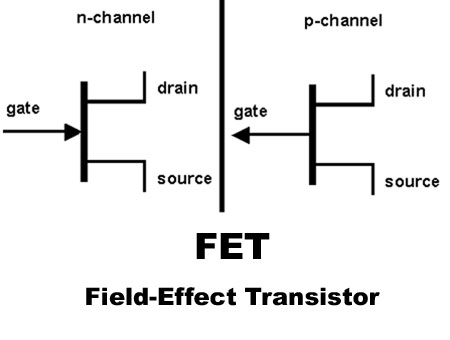INTRODUCTION to FET-Field Effect Transistor
So far we
have discussed the circuit applications of ordinary transistors, in
which both holes and electrons take part. This is the reason that these
are sometimes called the bipolar transistors. Such transistors have two
main drawbacks namely low input impedance because of forward biased
emitter junction and considerable noise level. Both of these drawbacks
have been overcome, to a great extent in the field effect transistor
(FET), which is an electric field (or voltage) controlled device. FET’s
because of possessing all the advantages that tubes and ordinary
transistors (BJTs) have, are replacing both the vacuum tubes and BJTs in
applications.
A
field-effect transistor (FET) is a three terminal (namely drain, source
and gate) semiconductor device in which current conduction is by only
one type of majority carriers (electrons in case of an N-channel FET or
holes in a P-channel FET). It is also sometimes called the uni-polar
transistor. Unlike a biploar transistor a FET requires virtually no
input (bias signal) current and gives an extremely high
input resistance -most important advantage over a BJT. Either BJT or FET
devices can be used to operate in amplifier circuits or other similar
electronic circuits, with different bias considerations.
There are two categories of FET’s namely:

FET-field-effect-transistor
1. Junction field-effect transistors (abbreviated JFET’s or simply JFET’s)
2.
Insulated-gate field-effect transistors (IGFETs), more commonly known as
the metal-oxide semiconductor field-effect transistors (abbreviated
MOSFETs or MOSTs).

No comments:
Post a Comment